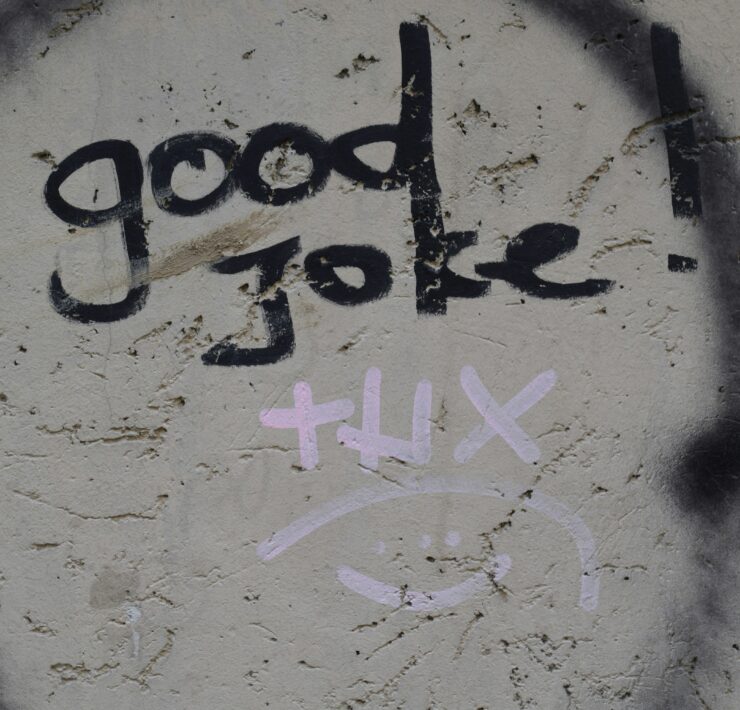COMO’s Public Art: From Iconic to Whimsical
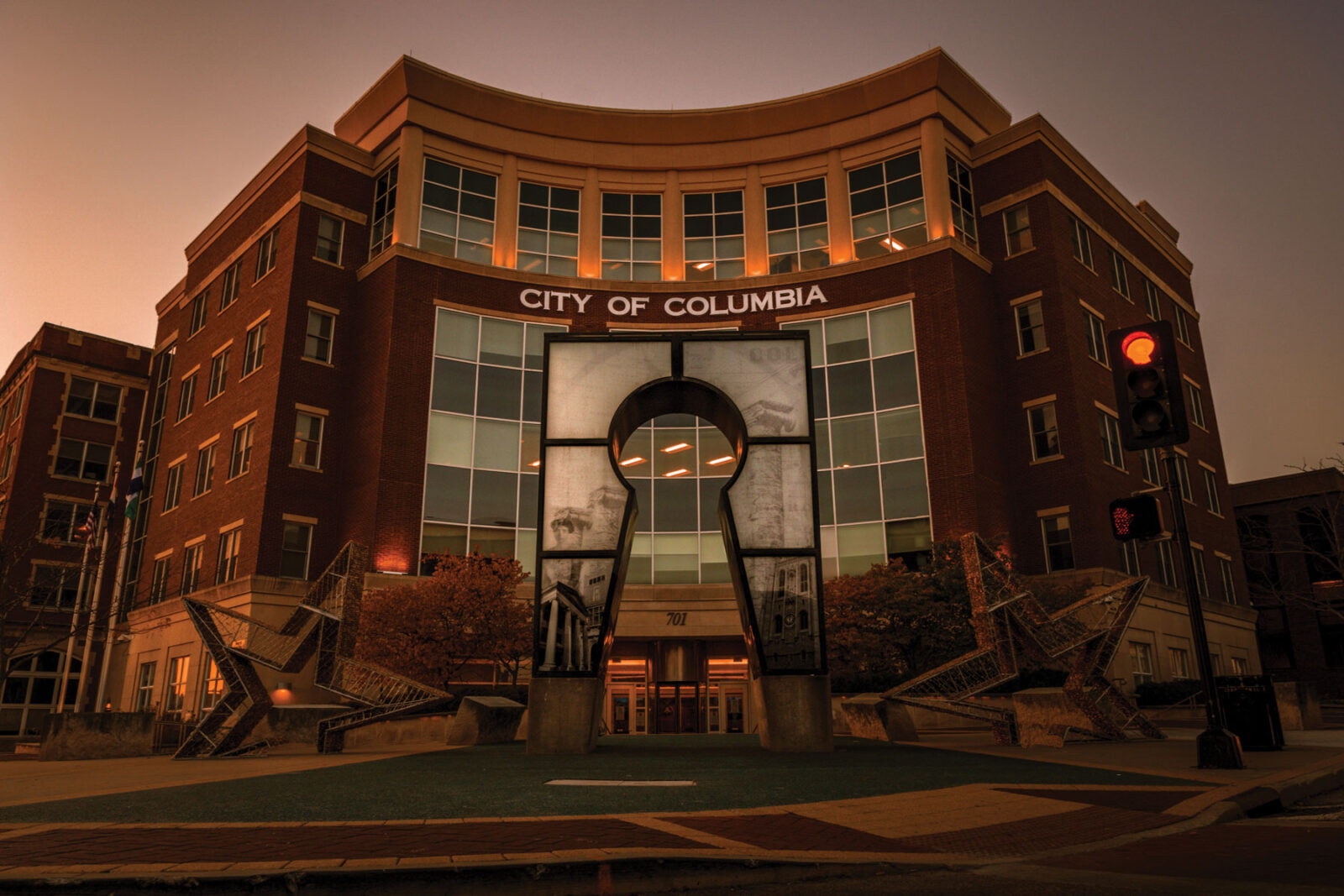
Where to find the variety of colorful, imaginative works throughout the city.
In the past few years alone, more than 10 pieces of public art, from murals and sculptures to painted and vinyl-wrapped traffic signal boxes, have popped up around Columbia. From publicly-owned pieces to privately-commissioned works, the booming public art scene in Columbia is evident from the vibrant colors and unique, eye-catching mixed-media pieces that adorn buildings, walls, green spaces, street corners, and other nooks and crannies throughout the city.
“As a child growing up in Columbia, I remember being impacted by public art in my day-to-day life, driving by the library and recognizing that art was tied to this building and this place that I would go to,” says Sarah Dresser, manager for the city of Columbia’s Office of Cultural Affairs. “Public art makes art accessible to all as we go about our lives throughout the city. We’re able to experience art in everyday life.”
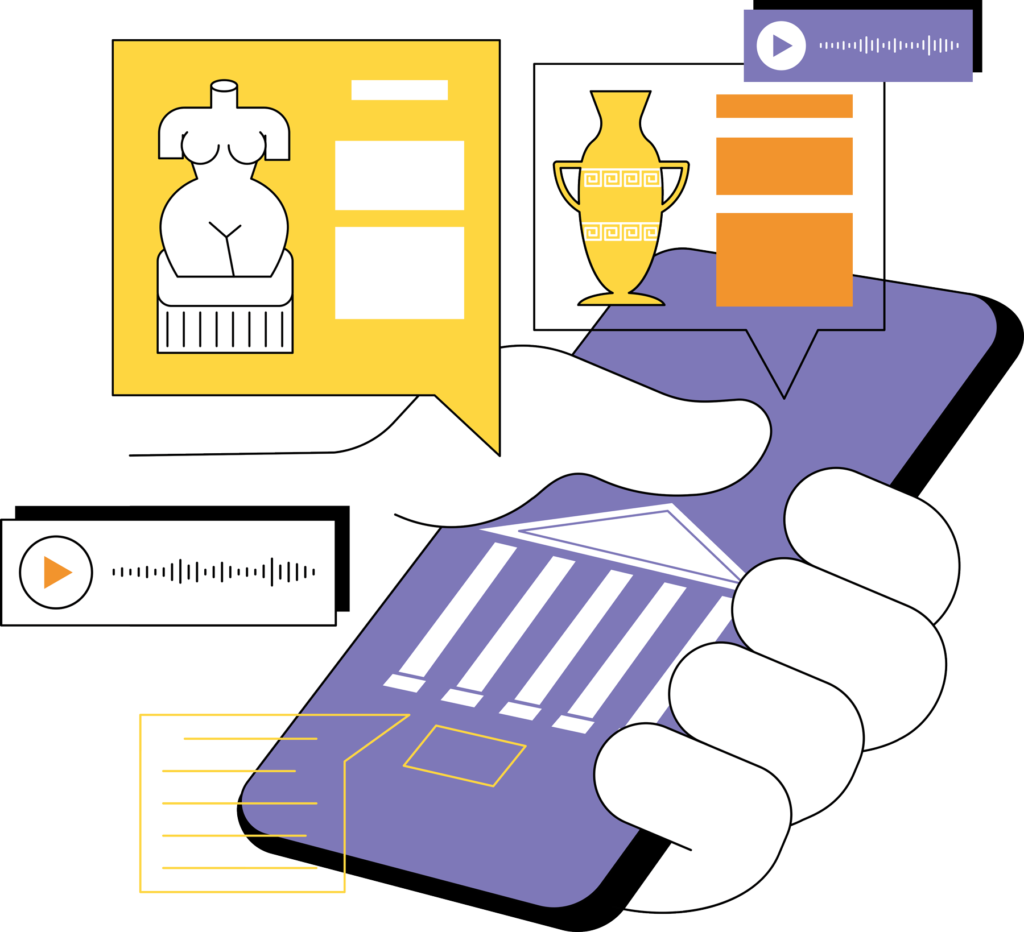
Navigating the artwork
As public art continues to appear around the city, a free phone app makes it fun and easy to tour the city’s masterpieces. OtoCast, available for download on both Apple and Android devices, isn’t new, but it’s become increasingly popular among tourists and residents alike.
“We’ve been a participant for close to 10 years,” Sarah says. “At that time we were in the midst of figuring out how we could make our public art more accessible, and it ended up being the perfect time for us to elevate our collection and get the information out there.”
OtoCast, along with a printed public art guide that is available at City Hall and the Columbia Convention and Visitors Bureau, catalogs Columbia’s public art, including both private collections and city-owned art. The app currently features around 40 works of art.
In addition to a written description and map for each piece of art, the OtoCast app includes a recording for each piece.
“We try to have the artists do the recordings, which adds an extra layer,” Sarah says. “Maybe they go a little deeper into their process, why they chose the design, the meaning behind it. With the app, it’s not just photos and a description, it’s also the audio, which is a great element.”
While the OtoCast app can be used in Columbia for the Public Art Tour, it features two additional local tours – the African-American Heritage Trail and the Columbia Tree Trail. The app also includes public art, history, and public-interest tours in cities across the U.S.
Percent for Art
Murals and other public art around the city have increased significantly over the years, largely thanks to momentum from Percent for Art, an ordinance passed by the Columbia City Council in May 1997.
“Through Percent for Art, any municipal construction or renovation project over $1 million has to designate 1 percent of the cost for site-specific public art,” Sarah says. “It has to be an above-ground capital improvement project.”
At the new Columbia Regional Airport terminal, a piece hanging from the atrium ceiling by Denver sculptor David Griggs and wall sculptures by Columbia artist Chris Morrey are recent examples of public art commissioned through the Percent for Art program.
“We’ve seen the importance the Percent for Art program is adding to our cultural landscape, but we’ve also seen an increased amount of privately initiated projects,” Sarah says. “We’ve seen a lot of mural projects around town, especially in the last three to five years.”
Public art adds color and beauty to the city. It also enhances life in Columbia, Sarah says.
“The community has realized that public art is important for our city’s vitality and for the wellbeing of our citizens,” she says. “It’s become a really important piece of our identity downtown.”
As part of the Percent for Art program, 1 percent of the allotted funds go towards the artist’s commission, while 10 percent of the fee is set aside for installation and long-term maintenance and cleaning. The Office of Cultural Affairs maintains responsibility for the upkeep of the publicly-owned pieces.
“They’re part of our cultural assets and we want to make sure we are keeping up with them, making minor repairs when needed,” Sarah says. “We assess the pieces to see what maintenance is required. Some work is handled internally, and some is contracted out to someone who specializes in public art conservation. We do have that maintenance as part of our ongoing budget and part of our funding for these projects.”
Columbia City Council and the Commission on Cultural Affairs play a large role in administering the Percent for Art program. When the budget is being set for a construction project, the city council officially designates the project as a Percent for Art project. That sets the rest of the process in motion.
“Our Commission on Cultural Affairs will weigh in and make recommendations on the scope of the project,” Sarah says. “They’ll decide the scope for our artist pool, whether it will be regional or national.”
Artists respond to a request for qualifications, which includes a resume and images of previous work. From that pool of artists, the Percent for Arts standing committee selects finalists, conducts interviews, and recommends an artist to the Commission on Cultural Affairs. The city council then votes to approve the commission’s recommendation. Once an artist is selected, the same process repeats when the selected artist submits a design for approval.
“There is a public comment period that is incorporated into the process at various points,” Sarah explains. “When the design is given the okay, the artists then receive benchmarks to meet along the way.”
Creating community
In addition to adding beauty and visual interest, Columbia’s public art has proven to play a large role in the community. The Keys to the City sculpture, the largest Percent for Art project completed to date, serves as a main portal to City Hall. Installed in 2010, the large sculpture commemorates Columbia’s history.
“It’s right in the middle of downtown in front of City Hall – it’s pretty huge – and you can’t miss it,” Sarah says. “It has really become a landmark for the city of Columbia. It has become a gathering place. Groups use it for demonstrations, and it is a great wayfinding tool if you’re trying to meet someone downtown.”
La Colomba, funded in part by the Missouri Arts Council, is owned by the city but is currently on a long-term loan to the Columbia Public Library for the next 30 years, she says. The stainless steel sculpture depicting an abstract dove in flight was completed in 1979. It was on the south side of Broadway before the library renovation, but it was moved to the northwest corner of Broadway.
“It’s iconic because it’s been there for more than 40 years,” she adds.
Rolling Ahead, a Percent for Art project created by Ron Fondaw, is found on a parking structure at 8th Street and Cherry Street. The neon, ceramic-tile mural features a series of colorful lines radiating from the garage’s glass atrium.
“This is a good example of public art being integrated into the buildings,” Sarah says. “If you think of site-specific public art, it’s not always a stand-alone structure. It’s really effective when it is integrated into the elements of the building.”
Thanks to continued growth and construction throughout Columbia, as well as the Percent for Art ordinance, the public art scene is consistently growing. A glass piece for the front of Fire Station 11 is currently being fabricated by Tyler Kimball of Monarch Glass Studio in Kansas City, and within the next year, the piece is expected to be completed and installed.

Check out a few of COMO’s great (physical) galleries:
- Sager Reeves Gallery | 1025 E. Walnut St.
- Orr Street Studios | 106 Orr St.
- Columbia Art League | 207 S. 9th St.
- Davis Art Gallery | 1414 E. Walnut St.
- The Sidney Larson Gallery | 1009 Rogers St.
- Stop-Gap Projects | 810 E. Walnut St.
- George Caleb Bingham Gallery | University Fine Arts Bldg, A125 | 505 Hitt St.
- Shannon Webster Art Studio & Gallery | 1023 E. Walnut St.
- The State Historical Society of Missouri | 605 Elm St.
- Boone County History & Culture Center | 3801 Ponderosa St.

Returning
Artist: Chris Morrey (local artist) | Year: 2022
Materials: fiberboard with acrylic metal coating
Location: Columbia Regional Airport
Returning is a pair of large oval rings, each about five by six feet in size, with different, detailed shapes and surfaces, and contrasting colors. The complex shapes of each ring are reminiscent of planets, suns and other celestial bodies, with curved radiating extensions from a central circle. The general ring shape of each of the pieces speaks to the cyclical nature of days, seasons and years, and resonates with concepts of leaving, returning and repetition. They have staggered surfaces, like a topographical map or wood grain. The two rings have different metallic finishes, each with a patina to highlight the surface relief and add interest. Returning was commissioned as a Percent for Art project.
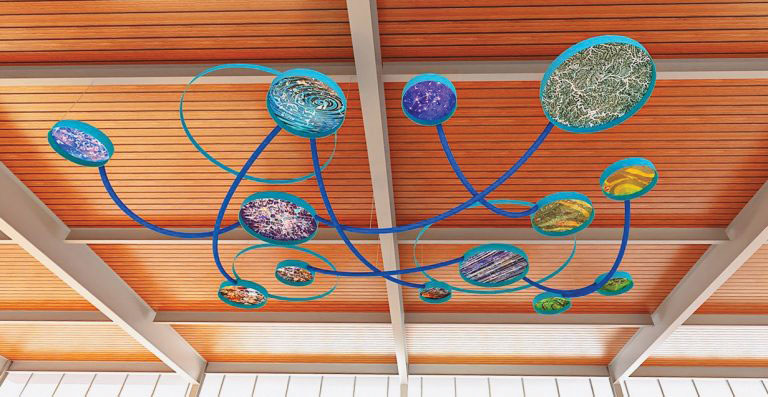
Columbia Crossing
Artist: David Griggs | Year: 2022
Materials: aluminum and glass
Location: Columbia Regional Airport
This sculpture floats over the main hall of the terminal and engages the viewers with hand-painted images depicting the land and legacy of Columbia and Boone County, reminding them of the special qualities that make Columbia a unique destination. The piece has multiple integrated parts that appear to move among and across each other suggesting the dynamics of flight. Columbia Crossing was commissioned as a Percent for Art project.
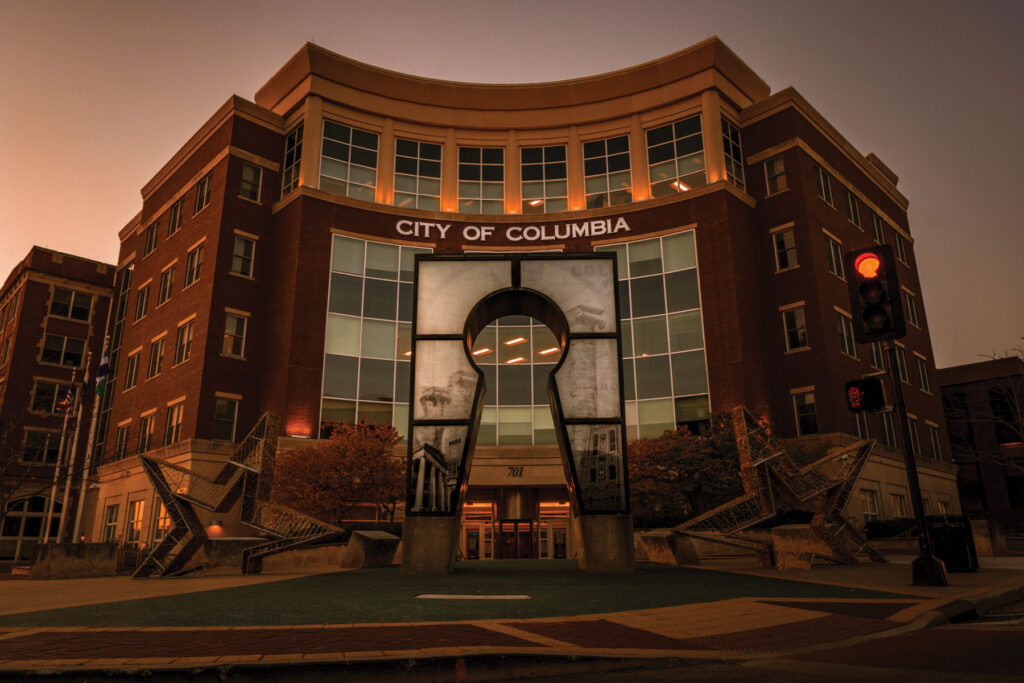
Keys to the City
Artist: Howard Meehan | Year: 2010
Materials: digitally enhanced photography in laminated glass, powder-coated steel frame, and LED lighting
Location: Columbia City Hall Plaza
Completed in May 2010, the Keys to the City sculpture is the biggest Percent for Art project undertaken by the city to date. This large-scale sculpture commemorates Columbia’s history and includes imagery of local landmarks, and notables like Mary Paxton Keeley and John William “Blind” Boone, set against a backdrop of local historical maps. The keyhole-shaped sculpture serves as a main portal to City Hall. Its design and placement are essential to the artist’s intended metaphor that an active and involved citizenry is the key to a prospering community.
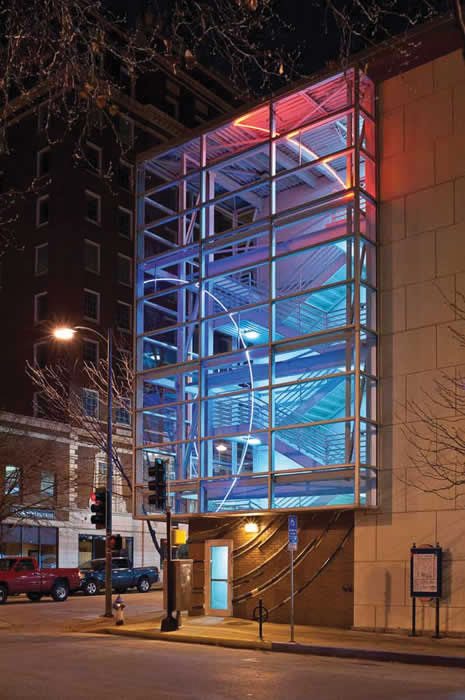
Rolling Ahead
Artist: Ron Fondaw | Year: 1999
Materials: ceramic tile and neon
Location: Eighth and Cherry Parking Garage
Fondaw’s handmade ceramic-tile mural, a series of colorful lines radiating from the glass atrium, uses the wheel as its design motif. By addressing both facades of the garage at all levels, the mural engages the viewer from a distance and at the pedestrian level. The mural was commissioned as a city Percent for Art project.
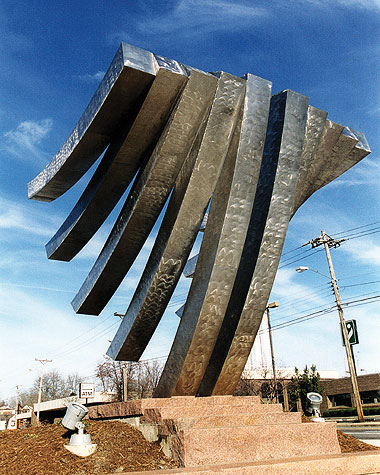
La Colomba
Artist: Peter Chinni | Year: 1979
Materials: stainless steel
Location: Columbia Public Library
Across the street from the city library, this abstract depiction of a bird in flight stands more than 10 feet tall on its base. “La Colomba” means “the dove.” The work, funded in part by the Missouri Arts Council, is owned by the city but is on long-term loan to the Columbia Public Library.
Art installation content provided by the City of Columbia








